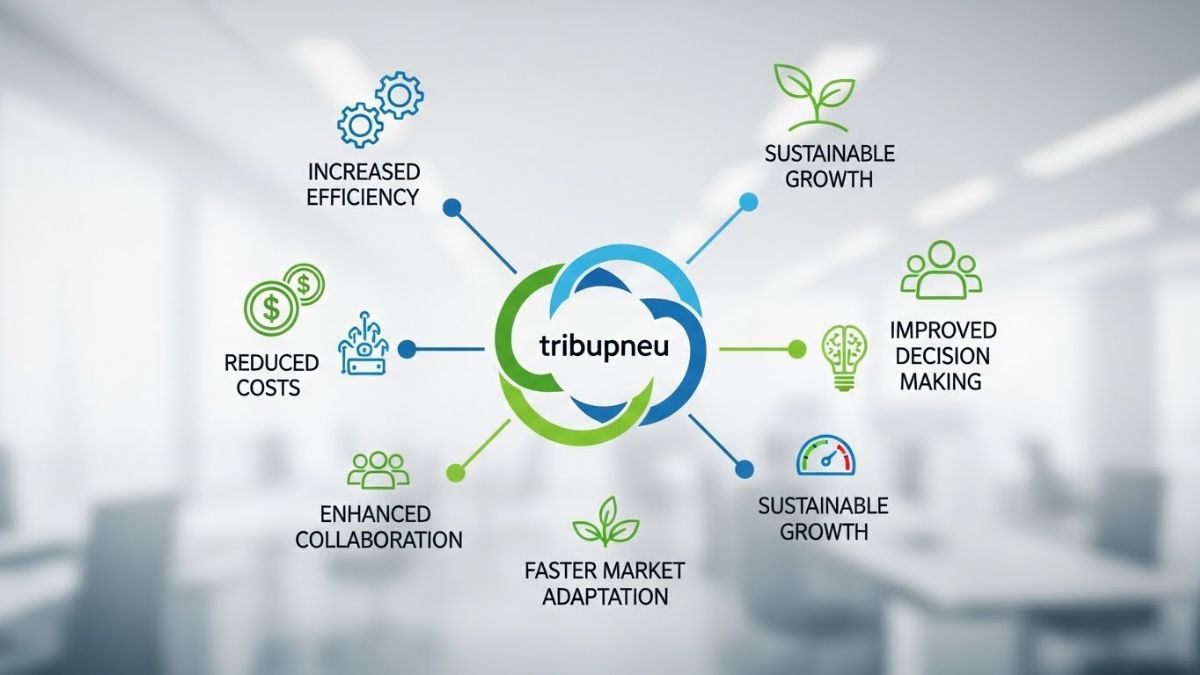For companies operating in the fast-paced financial technology arena, compliance is critical but not always easy. Companies must comply with regulations that may shift overnight. Fintech companies, therefore, need to be equally fast to adjust whether it’s to internal policies and safety or external, customer-facing adjustments to accuracy and UX features. A headless content management system (CMS) can help ease the strain with a content creation and management solution that supports a fintech’s ability to render compliance changes, compliance facilitators, and content-driven compliance updates without missing a beat for speed or quality. This article will discuss how a headless CMS allows the financial technology industry to comply quickly.
Regulatory Control with Centralized Compliance Management
With a headless CMS, content creation is centralized. Fintechs can have all of their compliance-related content created and managed in one location. By using techniques like React dynamic component rendering, fintech companies can efficiently display compliance-approved content consistently across various user interfaces. A compliance team can easily review compliance-related content in one setting, edit for precision and compliance, and adjust to ensure consistency and compliance. When everything is created in one place, the chance for error is reduced, tracking capabilities are easier to manage, and auditing is less complicated. Fintechs are empowered to manage all compliance efforts from within and avoid costly regulatory fines while boosting regulatory confidence.
Ability to Quickly Change Content for New Compliance Regulations
Compliance regulations within the finance realm often change rapidly, needing urgent updates for terms and conditions, policy adjustments, compliance regulations documents, and customer-facing compliant documents. Legacy systems are even less equipped to handle urgent compliance changes; a headless CMS is the answer. A headless CMS separates the front-end from the back-end development to deliver content, allowing for API-driven capabilities to ease even the most time-sensitive information changes. Compliance teams and marketing managers alike can alter policies and refresh customer-facing documents within minutes to comply with new regulations, ensuring all content is compliant, accurate, and updated wherever it exists online.
Multichannel Compliance Support
Fintech customers operate in various ways. Whether a cash transfer happens through a mobile money app, a compliant document is sent through email, or third-party software interoperability occurs, multichannel engagement makes omnichannel compliance efforts more complicated. With a traditional CMS, compliance is challenging to access at every interaction. With a headless CMS, this challenge is resolved as it provides the opportunity to syndicate compliant language across the board at the same time, on multiple channels simultaneously. Compliance teams can ensure every interaction is compliant because it’s the same verbiage shared across the board; this reduces operational risk in a multichannel landscape.
Improved Security and Data Compliance
Fintech companies work with some of the most sensitive data in existence, meaning their security practices must be on high alert. A Headless CMS increases security by default because it distinguishes the content repository from the front-end presentation layers that users see. This additional architectural separation means vulnerabilities and attack surfaces are significantly reduced, protecting sensitive data while making it easier to comply with data compliance regulations like GDPR. In addition, improved security increases fintech companies’ trust in their customer’s championed operations, which is vital for regulatory trust and institutional reputation.
Easier Compliance Management from Integration with Compliance Focused Solutions
Compliance is about more than just processing; it’s about streamlining operations and workflow management. A Headless CMS can easily integrate with compliance-focused solutions, such as monitoring and content auditing/reporting solutions. If integration exists, compliance efforts are more automatic, requiring less manual processing and reducing the likelihood of human error. Fintech companies can more proactively meet compliance requirements without unnecessarily draining resources or time to manage compliance efforts.
Greater Visibility for Smoother Compliance Audits
Part of the compliance effort is auditing, and within any regulated industry, visibility allows compliance auditors to assess easily. The backend of a Headless CMS allows stakeholders to see itemization logs, content versions, and various ownership trails, so compliance officers have what they need. Compliance teams can easily explain what was changed, when it was updated, who gave approval for publishing, etc.; stakeholders can spend more time on other compliance efforts instead of preparing for audits.
Promoting Inter-Departmental Collaboration for Seamless Effectiveness
Compliance management does not happen in a bubble. Compliance officers must work with content creators and tech to accomplish the goal. A headless CMS promotes inter-departmental collaboration with a standardized workflow and generalized content approval process. Teams work together more efficiently, assessing compliant material and pushing it live in record time without added delays. This collaborative ability fosters faster compliance turnaround time, enhanced transparency and accountability, and championed operations for Fintech organizations.
Making Use of Analytic Tools for Enhanced Compliance Efforts
Data-driven decision-making allows Fintech organizations to better understand what’s going on behind the scenes. A headless CMS can link up with the best analytics tools out there so compliance departments and marketing teams can monitor content performance, engagement, and compliance success. Fintech companies can take the analytics to figure out what’s working and what’s not in real time, continuing to optimize compliance efforts instead of waiting for the quarterly or annual audit to recommend changes for regulatory compliance purposes or customer service needs.
Reducing Technical Debt for Greater Operational Flexibility
In many instances, Fintech companies find their wheels spinning due to excessive technical debt and outdated systems. A headless CMS allows for reduced technical debt, as front-end and back-end solutions can be upgraded separately without needing to do an entire overhaul. The easier something is to upgrade, the easier it is to set in stone. Thus, Fintech companies can stay compliant with reduced technical debt, making it easier to maintain PCI compliance or any other compliance when regulatory agencies come asking questions. Such regulatory readiness translates to lower costs down the road.
Global Compliance Made Easier with Effortless Localization
Fintech companies attempting to grow across borders need to either comply with or understand localized content and compliance regulations globally. The headless CMS solution takes away the headache by managing compliance content in a multilingual fashion in a centralized locale and dynamically serving regionally required components. Compliance teams will be able to ensure that legal verbiage and regionally sensitive content is delivered regionally on schedule, updated in a central fashion, offering quicker compliant access to new international horizons and increased operational efficiency across the globe.
Future Compliance Management is Always Ready
As the world of fintech isn’t slowing down any time soon, ensuring compliance capabilities are always future-ready is crucial. The great part about a headless CMS is that it is agnostic; companies can bring in integrations with emerging technology, new compliance initiatives, and distribution channels, and not skip a beat. Keeping the headless CMS as it allows compliance management techniques to be in line sooner rather than later with emerging regulations, technologies, and demands from customers without excessive overhaul or reconfiguration down the line.
Compliance Delivery Speed Accelerates Consumer Onboarding
Onboarding for any technology is an important process and in the world of fintech, there are compliance requirements that must be met upon onboarding to ensure transparency and regulatory obligations. A headless CMS allows for the same speed of delivery of compliance requirements as it does product information across channels. Terms, conditions, legal requirements, and project-based information can be sent and shared proactively as they’re also sent to customers and clients for compliance purposes during the onboarding acquisition process and this allows for compliance to exist from day one of any customer relationship fostering transparency and trust in regulation.
Building Brand Trust Through Accurate and Consistent Compliance Communication
Trust is everything in a financial technology world. The more customers receive the same compliance-focused message from different areas of the company, the more trust they have in the reliability of the brand. A headless CMS allows fintechs to offer accurate, trustworthy, and compliance-focused messaging across multiple consumer-reach channels that make customers trust the brand even more. When they see that the company is honest and straightforward with compliance needs and operations, such integrity fosters deeper customer relationships, elevates brand perception, and creates a competitive advantage in a compliance-heavy world.
Promoting Compliance That Doesn’t Compromise Sustainability Efforts
FinTech decisions are based on sustainability efforts for stakeholders to decide. A headless CMS promotes compliance that does not compromise sustainability efforts through less digital management regarding compliance; since compliance content is never permanent, companies do not have to overstaffed content compliance teams, and reduced overhead in compliance management dynamics fosters sustainable results. When compliance content management becomes easier and less energy exhaustive, fintechs can promote their compliance-induced goals along with sustainability efforts. A financial technology company using a headless CMS can use one of its compliance caveats to promote its sustainable efforts to show it’s a socially responsible company.
Allowing Customers to Quickly Receive Compliance Messages/Information
Regulatory compliance inconsistencies can change without much warning. A headless CMS allows compliance managers and officers to send alerts and critical information across digital spaces. This ensures that customers have access to important information while internal teams can receive details to remain compliant without failing due to lack of information. Fintechs relying on a headless CMS can quickly pivot to meet regulatory requirements on compliance, effectively and efficiently respected as beings in the field for their abilities to communicate their findings swiftly.
Encouraging Personalization Where Compliance Requires
Fintech end-users crave personalization more than ever. The headless CMS method enables fintechs to foster ultra-personalized content while remaining compliant with regulators. For example, an API-driven content approach allows companies to easily customize messages and notifications based on user profiles, preferences, etc.and compliance isn’t compromised through creative and innovative engagement. Fintechs can do what’s best for their users without the fear of regulators getting in the way.
Improving Cost Efficiency of Compliance Efforts
Compliance can cost a lot of time and energy. A headless CMS solution decreases costs for compliance-related efforts as it fosters more streamlined approaches; where compliance is built into the automated delivery process, manual input is diminished and the need to rely on old-school tactics is lessened. Ultimately, a headless approach takes fewer resources and automated compliance efforts from regulatory status checkups to content delivery can save companies dollars better suited for product development instead.
Conclusion
Compliance is an ever-changing challenge within fintech as it requires constant communication with regulatory bodies and an understanding of shifting policies, best practices, and laws. Communication with regulatory bodies is paramount to prove transparency, good faith, and intention of managing sensitive financial data. Yet as compliance-driven policies become more specific and complicated, systems need to be in place to comply on demand.
A headless CMS for fintech offers this agility and capability. Since more antiquated or monolithic systems are more complicated to amend, a headless system allows fintech to adjust and implement compliance-oriented measures with relative ease. A headless system decouples content management and its layers from the presentation layer, meaning that compliance-related efforts that require risk disclaimers or business practice disclosures do not necessitate a revamp of an entire product delivery application. Changes can be made quickly as risk disclosures and disclaimers are pushed out through one interface while other access to goods and services can be updated in another, without extensive reinvention.
Additionally, fintechs must partner with their internal security teams and external cybersecurity vendors. A headless CMS can help here, too, as it allows for easier implementation of security compliance updates, accessibility audits, and real-time activity observation. These elements ensure compliance in that ongoing security enhancements can be leveraged over time that prevents lapses in security breaches, better securing sensitive information and enhancing reputation and trust.











